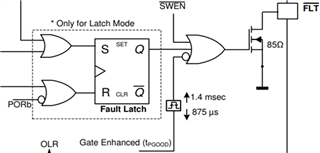Other Parts Discussed in Thread: TPS26600-02EVM
Tool/software:
Hi,
Q1
The TPS26600-02EVM documentation states "Load current monitor output with 1.5 V / A" and uses R(IMON) of 20 [kΩ]. Is it correct that the IMON output range "1.5 V/A" changes depending on the design value of R(IMON)?
Previously, E2E answered, "The following two formulas have the same meaning, but if the input voltage is 5.5 V or higher, use the simplified second formula when calculating R(IMON)."
Does the input voltage mean V(IN)? Or V(IMONmax)? Also, why is the input voltage 5.5 V or higher? Is V(IMONmax) the maximum input voltage of the ADC? What does "75 × 10^(−6)" in formula 2 mean?
Q2
The following circuit is used to provide a time delay before asserting PGOOD, which is used to enable the DCDC placed after the eFuse.
Is it correct that the time delay is tPGOOD(degl)=(875 + 20 × C(dVdT))?
Is it correct that it can be used as a Power Good indicator for the DCDC placed after the eFuse?
What converters are referred to as "downstream converters"?
Does the logic within the dotted line only function in Latch mode? Also, how does it work in other modes?
Thanks,
Conor

